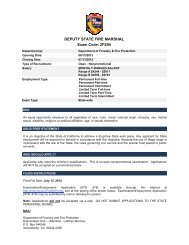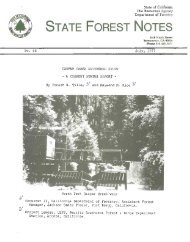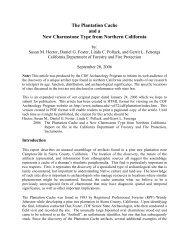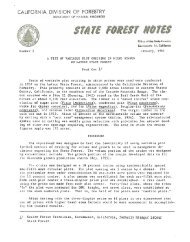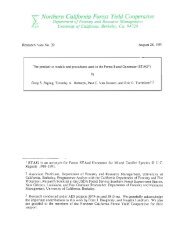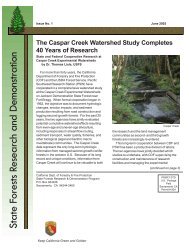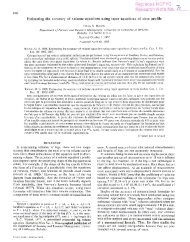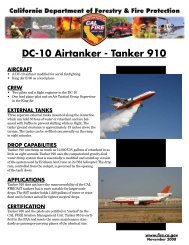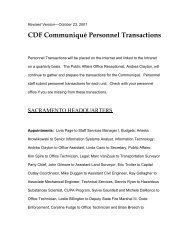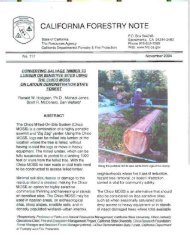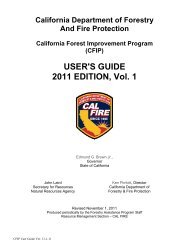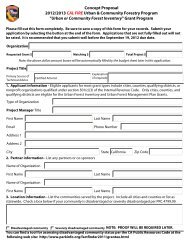Create successful ePaper yourself
Turn your PDF publications into a flip-book with our unique Google optimized e-Paper software.
Fire defense Improvements:<br />
2005 Riverside <strong>Unit</strong> Pre-Fire Management Plan<br />
Creation <strong>of</strong> a fuelbreak along the <strong>California</strong> Aqueduct Road at least 100’ in width.<br />
This fuelbreak will bisect SMRMA along a north-south axis.<br />
Real-time access to weather information from an on-site station.<br />
Vegetation Management:<br />
Prescribed burning in the chaparral fuels to create an age-class mosaic that<br />
reduces fuels and enhances habitat.<br />
Pre-Fire Suppression Plan:<br />
Develop a plan by mutual agreement for distribution to fire suppression agencies<br />
having jurisdiction that addresses fire suppression tactical necessities while<br />
minimizing the impacts <strong>of</strong> those activities upon the environment.<br />
Status: Project is still in planning stages. A draft Wild Fire Management Plan has<br />
been prepared by SDSU for review. Some <strong>of</strong> the ignition risk reduction measures<br />
that do not involve ground disturbance have been implemented.<br />
Santa Rosa Plateau Ecological Reserve VMP<br />
The project involves prescribed burning on the Santa Rosa Plateau Ecological<br />
Reserve, which is located immediately west <strong>of</strong> Murrieta in the eastern foothills <strong>of</strong> the<br />
Santa Ana Mountain Range. A VMP plan was first developed for the Reserve in the<br />
mid-1980’s and subsequent burn plans have been in place ever since. There are<br />
4,230 acres covered under the current agreement.<br />
Prescribed fire was introduced onto the reserve primarily to simulate natural fire<br />
cycles and characteristics that support native vegetation communities historically<br />
present in the area. The reserve is divided into numerous burn units that are<br />
randomly selected for burning each year. On average fire is returned to the same<br />
unit approximately every five to seven years with between 500 and 1500 acres being<br />
treated annually. In addition to the ecological benefits, these recurring cycles <strong>of</strong> fire<br />
generate plant communities with less dangerous wild fire behavior characteristics.<br />
They also develop vegetative age classes that will be less likely to create or sustain<br />
major wild fires.<br />
Fuels are primarily annual grasses with oak woodland cover; however, chaparral is<br />
present in all or portions <strong>of</strong> several units. Project preparation work involves cutting<br />
<strong>of</strong> hand line and road maintenance to facilitate access and control lines. Burning is<br />
typically carried out using drip torches and aerial ignition devices.<br />
35




